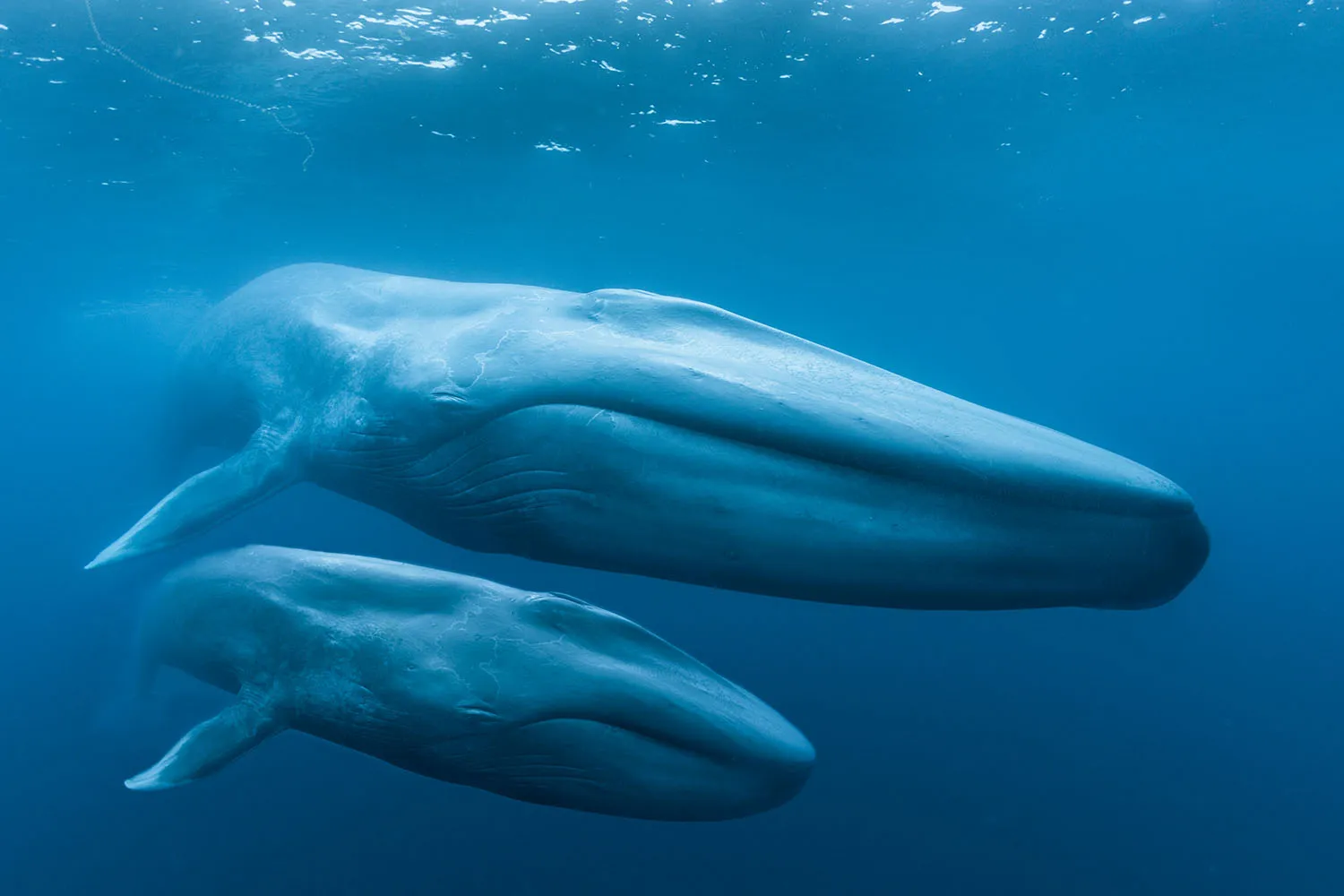Chattanooga, Tenn. (Feb. 29, 2024) – Blue Whales are the largest animal ever to have lived, but just reading that doesn’t quite convey their colossal proportions.
They are bigger than the biggest dinosaur and weigh as much as 200 cars. Their tongue alone weighs as much as an elephant, and their heart is as large as a golf cart. If one found its way into a baseball stadium, its bulk would stretch from home base past first base and almost ten feet into the outfield.
So yeah … big.
Despite their size, however, these colossal whales navigate our planet’s oceans with an effortless grace and gentle nature, which is partly why aggressive hunting by whalers pushed them to the brink in the 1900s. Only the protection conferred by the International Whaling Commission in 1966 saved these marine mammoths from extinction, and their numbers have been on a slow rebound ever since.
Huge as they are, Blue Whales are surprisingly reclusive and difficult to study and film, making the footage on display in Blue Whales: Return of the Giants 3D even more amazing. Premiering at the Tennessee Aquarium IMAX 3D Theater on Friday, March 8, this giant-screen epic chronicles Blue Whales’ remarkable recovery and offers stunning views of these enormous underwater giants.
Worldwide, few screens could show a Blue Whale at life size, but at 89 feet wide and 66 feet tall, Chattanooga’s biggest screen offers a nearly one-to-one view of these living leviathans.
Narrated by award-winning actor Andy Serkis (The Lord of the Rings, Star Wars), Blue Whales follows the adventures of two scientific expeditions and their groundbreaking work studying the natural history and biology of these elusive giants of the sea.
As they explore the waters of the Seychelles Islands in the Indian Ocean, searching for a missing population of whales not seen in more than 50 years, viewers will experience remarkable footage never seen on the giant screen. Dolphins skim the bow of waves created by these passing giants, hinting at their tremendous size. At the same time, footage of Orcas roaming the waters is a reminder that even the planet’s largest species can be both predator and prey in the ocean’s complicated food web.
Viewers will also see marine biologist Dr. Diane Gendron, the “Blue Whale Whisperer,” at the Centro Interdisciplinario de Ciencias Marinas in Mexico. Over 30 years of research, Dr. Gendron has built the world’s most comprehensive database of individual Blue Whales.
Audiences will observe Dr. Gendron at work in Mexico’s Gulf of California as she listens to Blue Whales’ unique methods of long-distance communication because — as if they didn’t have enough superlatives to their credit — they’re also one of the loudest animals on the planet.
“For the last 32 years, Diane Gendron has spent every winter in the Gulf of California researching Blue Whales – it’s the longest-running study of its kind,” says Director Hugh Pearson. “Diane’s extensive knowledge and experience of both the location and the animals enabled us to be in the right place and the right time to capture their unique behavior.”
To reach their enormous proportions, Earth’s largest animals must eat some of its smallest: krill, tiny marine crustaceans only slightly larger than a paperclip. Utilizing tremendous throats that expand to hold as much as 20,000 gallons of seawater at once, Blue Whales can consume as much as 16 tons of krill daily.
As in all things, Blue Whales even produce waste in enormous proportions. After such huge meals, their … byproduct … serves a greater purpose as rich fertilizer that fuels vast quantities of ocean life.
Recognizing the film’s (and Dr. Gendron’s) deep connections to Mexico, the IMAX 3D Theater will begin special screenings of Blue Whales: Return of the Giants 3D in Spanish on Saturdays and Sundays in June at 11 a.m.
This scientific giant screen adventure is being presented locally by Puckett’s Restaurant. Located adjacent to the Aquarium, the Puckett’s team sees the waves of excitement generated by 3D films like Blue Whales, and they are excited to support the Aquarium’s mission.
“As the Aquarium’s neighbor, we get to see kids and adults alike inspired and motivated after their visit,” says Graci Burnett, marketing coordinator for Puckett’s Restaurant. “The Tennessee Aquarium is a wonderful resource in our community, and we’re excited to support them in their environmental education efforts.”
An educator guide with classroom materials for school groups seeing the film will connect students directly with the material on screen, helping teachers integrate Blue Whales into their lessons. That guide is available at bluewhalesfilm.com/education
For tickets, showtimes, and additional information, visit tnaqua.org/imax/
